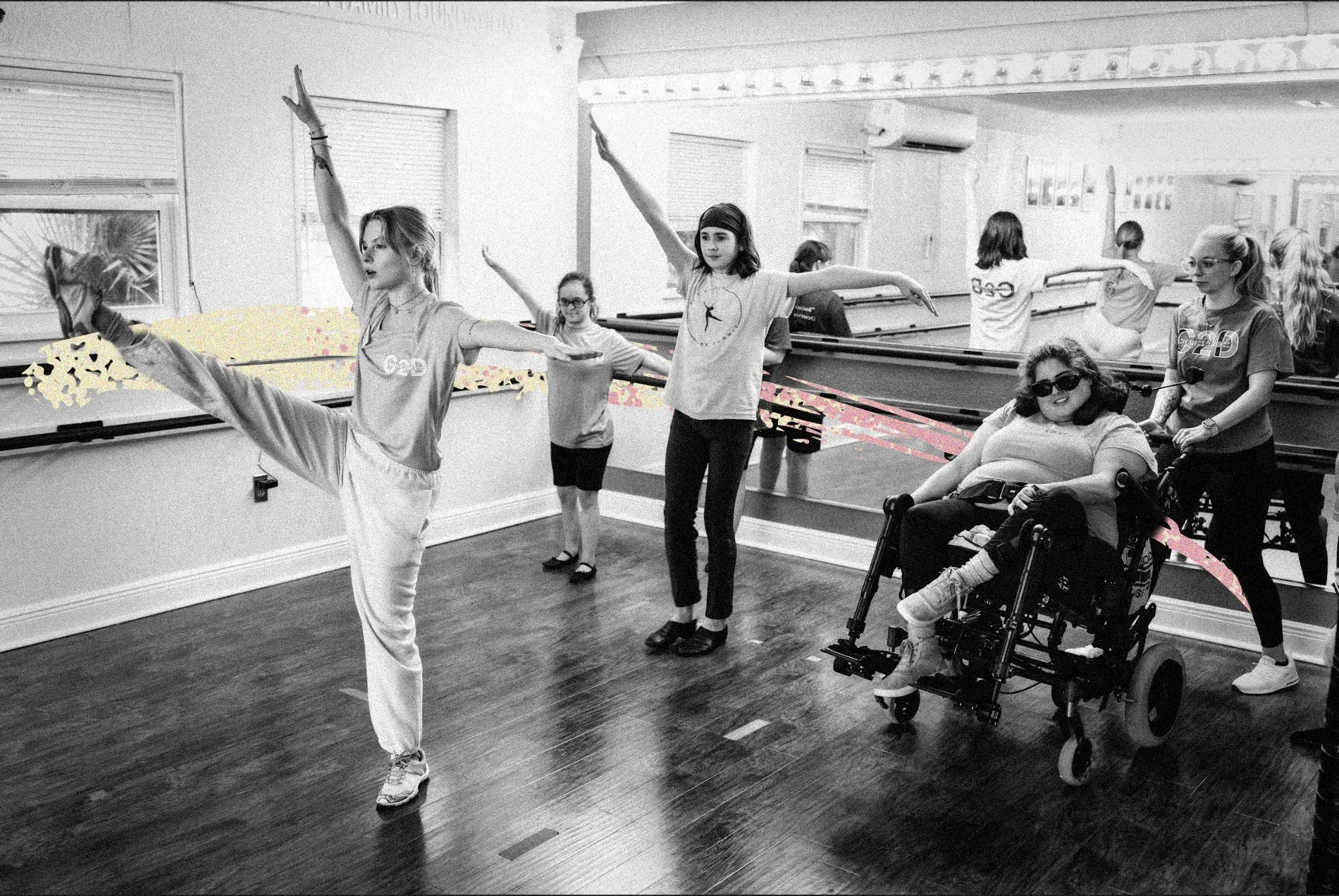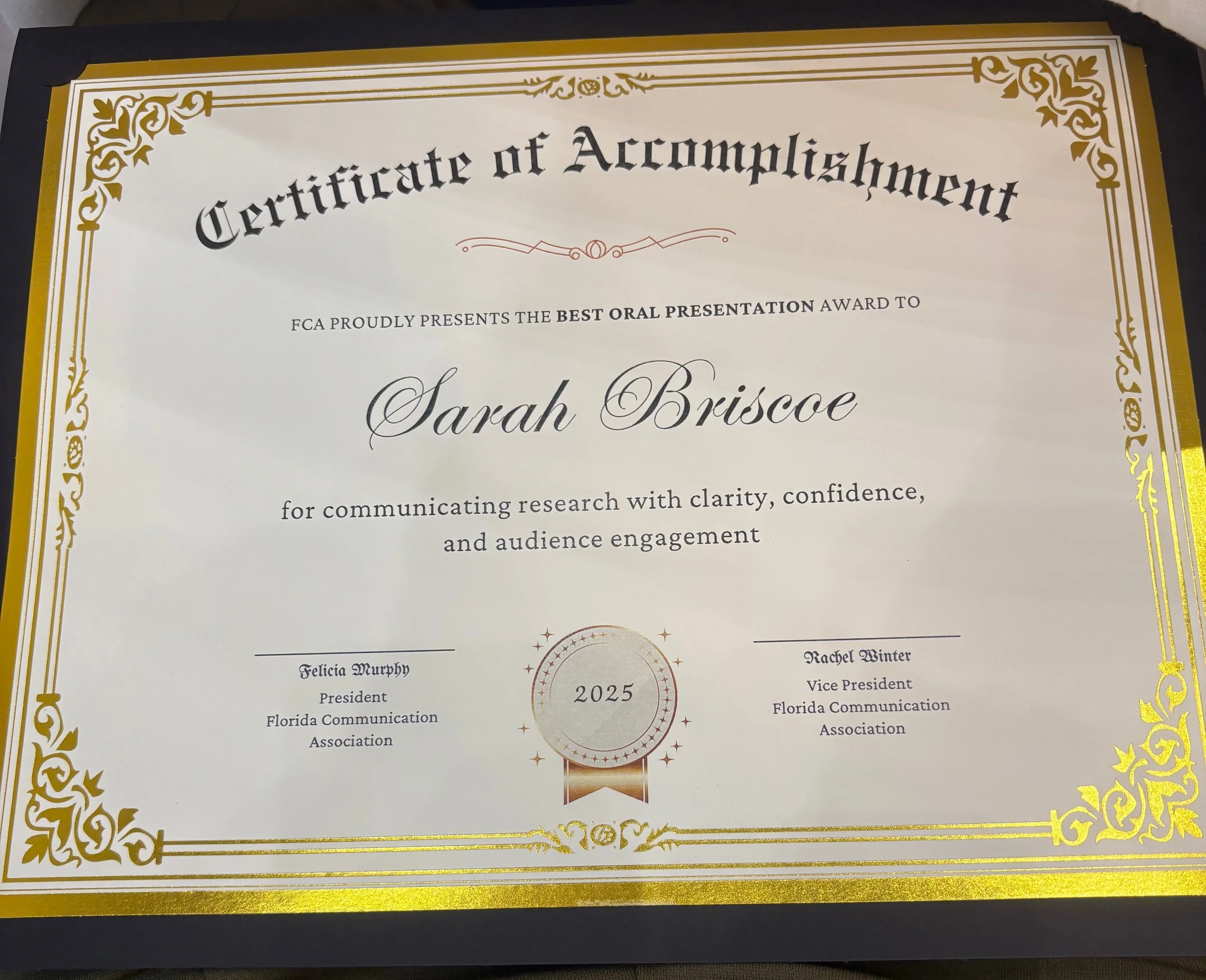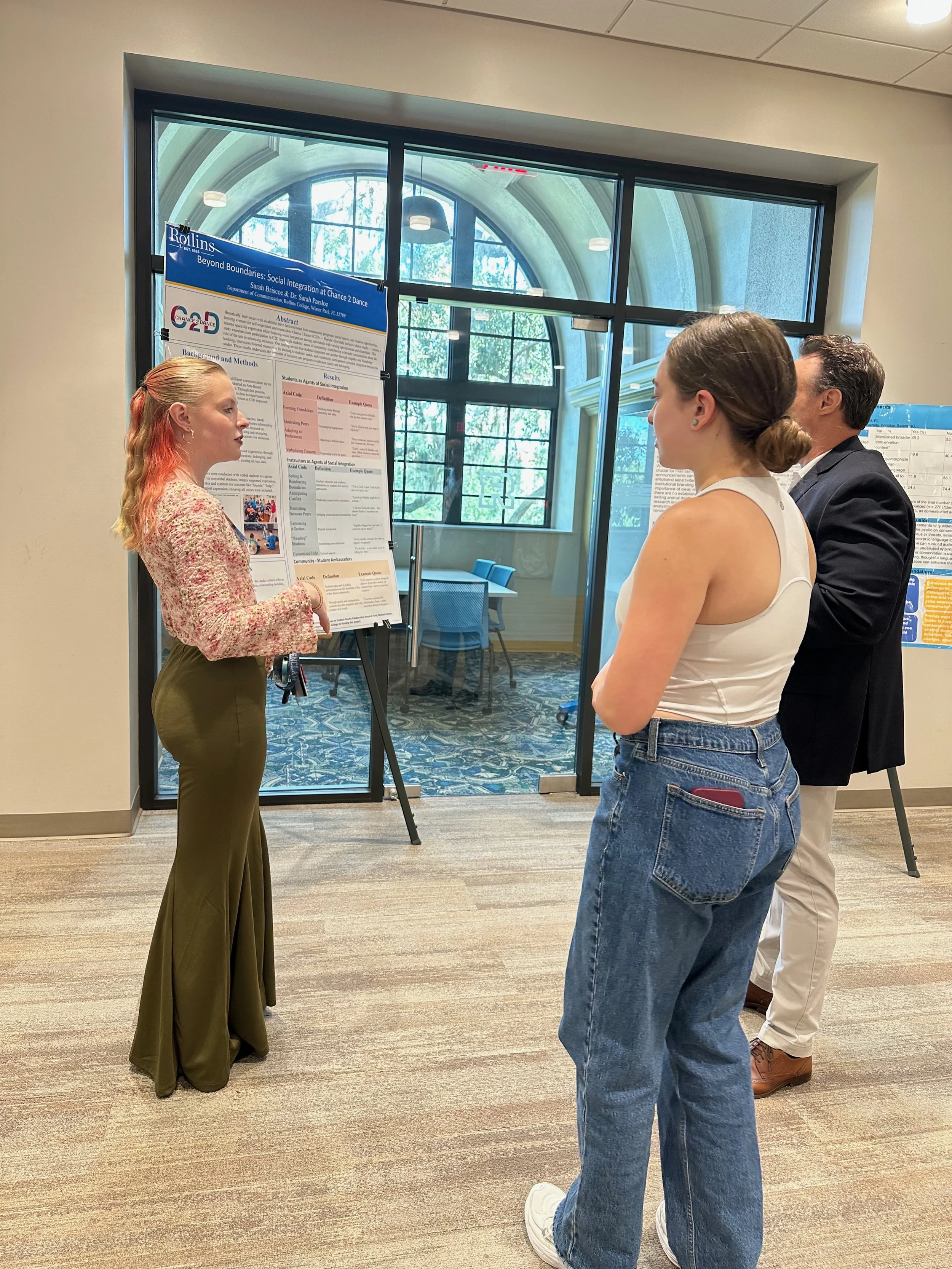

Concise Description:
This research explores the benefits of inclusive dance on participants with disabilities, namely their sense of social integration. Through participant-observation field notes, a dance-based focus group, as well as both verbal and image-facilitated interviews, I analyzed 168 pages of data on social integration at Chance 2 Dance, Florida’s first fully inclusive dance studio.
My findings concluded that social integration was fostered by 3 primary agents:
the students themselves,
the instructors,
and the wider community.
This project was shared at the Florida Communication Association’s 95th Annual Convention October 2025.
My presentation, “Beyond Boundaries: Social Integration at Chance 2 Dance,” explored how inclusive dance can build communication, resilience, and belonging.
I had the opportunity to engage with communication scholars and practitioners about the intersection of arts-based research and social connection.
The project received the Best Oral Presentation Award, recognizing excellence in undergraduate research and presentation.
What’s Next:
Broaden participant perspectives by conducting additional interviews with students, parents, and instructors to expand beyond the initial small sample.
Deepen Arts-Based Research by coding and analyzing the movement-based data from the dance focus group to capture embodied expressions of inclusion.
Explore core tensions in inclusion, such as
consent vs. compliance
individuality vs. collectivity
sensory + communication differences in shared space
Continue reflexive inquiry to further examine how the teacher–researcher role shapes interpretation and practice.
Compare across contexts by expanding future research beyond C2D to inclusive arts programs in other settings.




